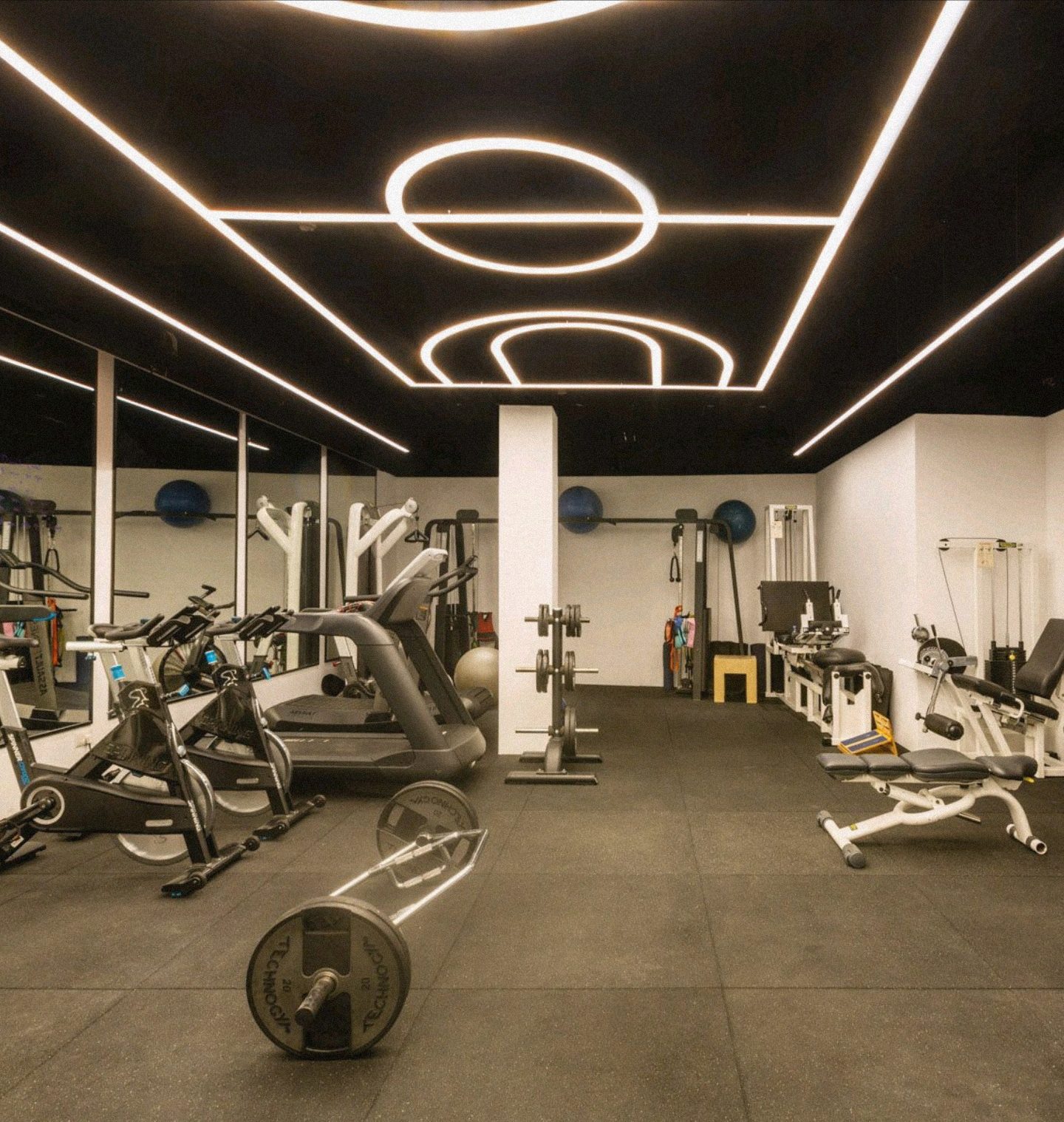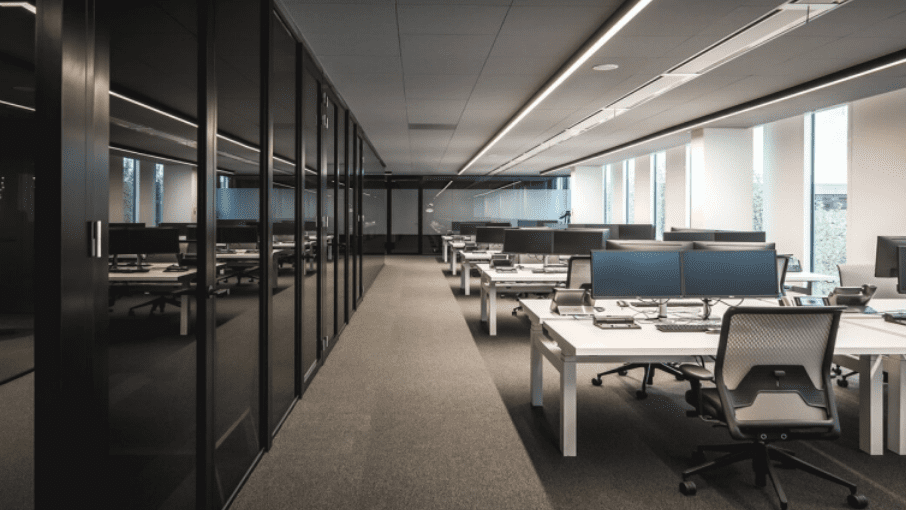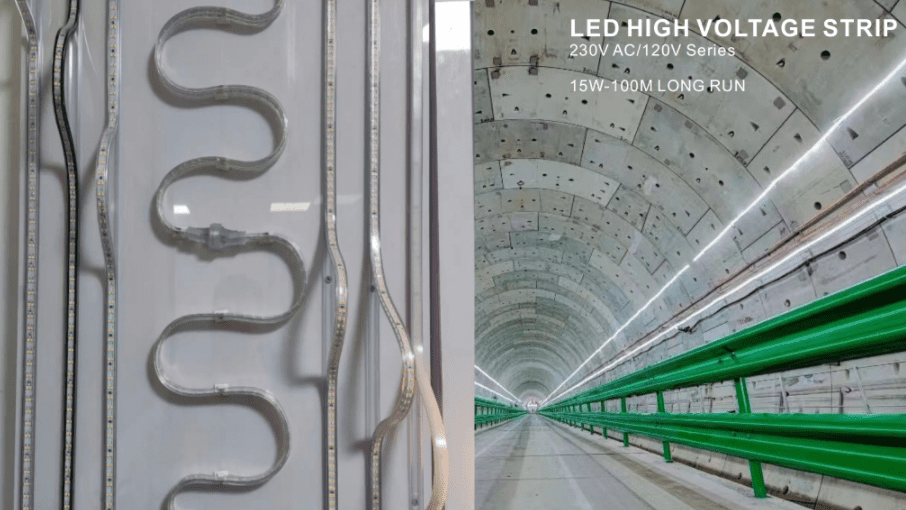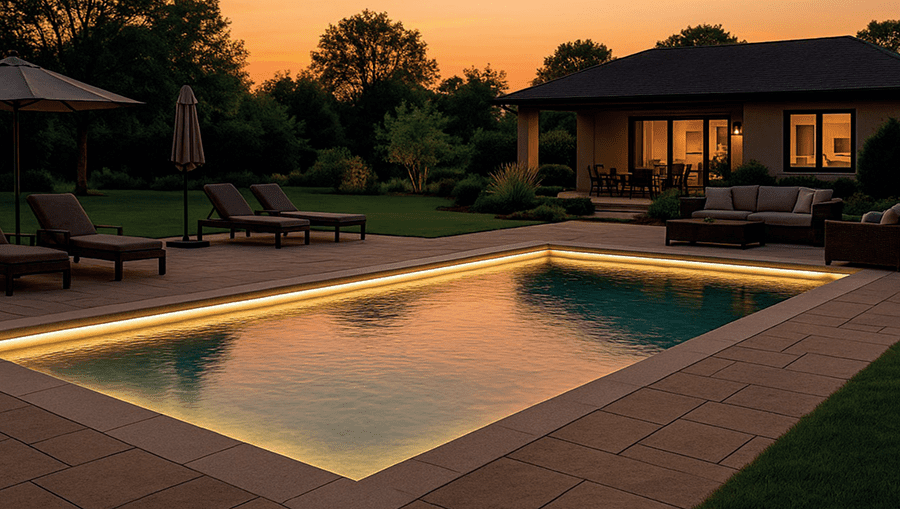There are different types of LED lighting that work well in gyms, each suited to specific needs. From high bay lights for large, open spaces to recessed lights that give a clean, modern look, choosing the right type of LED lighting can make a big difference in how your gym feels and functions. Understanding these options will help you pick the best lights for each area, ensuring your gym is bright, welcoming, and fit for every workout.
High Bay Lights
High bay lights are ideal for gyms with high ceilings, such as large fitness centers or basketball courts. These lights are designed to provide powerful, widespread illumination from above, ensuring that even the largest spaces are well-lit.
LED high bay lights are energy-efficient and offer excellent brightness, making them perfect for areas where clear, consistent lighting is essential. They are often used in multi-sport arenas and large commercial gyms where the ceiling height can be 20 feet or more.
Recessed Lights
Recessed LED lights, also known as downlights, are installed directly into the ceiling, creating a clean and modern look. These lights are great for gyms that want a minimalist aesthetic without visible fixtures.
Recessed lights provide even, direct lighting and are especially useful in areas where you need to avoid shadows, such as weight rooms or functional training areas. They’re also ideal for lower ceilings, ensuring that the space feels open and uncluttered.
Linear LED Lights
Linear LED lights are long, narrow fixtures that are perfect for lighting large, open spaces like gym floors or studios. These lights offer excellent light distribution, ensuring that every corner of the room is evenly illuminated.
Linear LEDs are versatile and can be installed in various configurations, whether in continuous rows or individually spaced out. They are especially popular in gyms because they provide a sleek, modern look while delivering bright, uniform light.
LED Panels
LED panels are flat, rectangular lights that provide soft, even illumination, reducing glare and creating a comfortable environment. They are particularly well-suited for fitness studios, yoga rooms, and other areas where a calm, focused atmosphere is important.
LED panels are often installed in drop ceilings, offering a seamless and professional appearance. Their design ensures that light is evenly spread across the room, making them a great choice for any space where balanced lighting is needed.
Accent Lighting
Accent lighting is used to highlight specific areas or features in the gym, such as a reception desk, signage, or special equipment. LED strips, spotlights, and wall washers are common types of accent lighting that can add visual interest and guide attention to key areas.
In a gym, accent lighting can also be used to create zones, helping to define different workout areas and enhance the overall aesthetic. For example, LED strips under treadmills or along the edges of a boxing ring can make these areas stand out while providing additional illumination.













